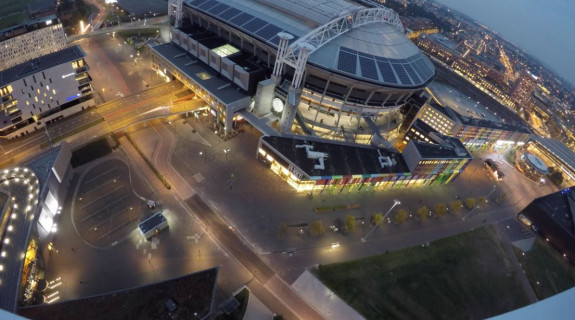The rapid developments of smart sensoring kick-started a new industry. However, in relation to public space, sensors are mainly used in interactive objects as part of cultural or temporal exhibitions like the Amsterdam Light Festival and Glow in Eindhoven. The Co-ReUS project aims to bring these kind of objects into the challenges of spatial design of public space.
Do you have a question, are you interested to join and/or would you like to follow the project via Newsletters? Please send an mail to project manager Jolanda Tetteroo via j.i.a.tetteroo @ hva.nl (remove spaces)
What is the goal of the project?
How to adjust public space real time to its users? This is the leading question in the Co-ReUs action-research project. The project brings together urban designers, interactive concept developers and local stakeholders and explores hands on the development of a possible responsive urban space.
What is the result of the project?
The project aims to have the public space responsive, adapting to its users real-time and thereby substantially improve the residential quality of the location and the safety perception of the users of the square.
The rapid developments of smart sensoring kick-started a new industry. However, in relation to public space, sensors are mainly used in interactive objects as part of cultural or temporal exhibitions like the Amsterdam Light Festival and Glow in Eindhoven. The Co-ReUS project aims to bring these kind of objects into the challenges of spatial design of public space. How can they offer a new and smart set of additional solutions for the ways we try to strengthen public space? The ArenA Boulevard is a large open square facilitating the handling of 100.000 visitors during peak hours of the located leisure functions. However, during the off peak hours, the square feels empty, lost and the safety perception is low. The specific cooperation between the organizations in this project combined with the ability to work with light, sensors and sound, aims to have the public space adapt to different user needs and thus become responsive.
Who initiated the project and which organizations are involved?
The Chair of Urban Design at the Faculty of Engineering of the Amsterdam University of Applied Sciences initiated and leads the project. Involved project-partners are 15 companies, 3 start-ups, the Municipality of Amsterdam, the TU Delft, UvA and ArenA-Boulevard- entrepreneurs.
What is the next step?
The research will be done via three stages. In the first stage the use and perception of the square is mapped both quantitatively and qualitatively. In the second stage the best locations will be determined and interactive objects will be developed and assembled, in co-creation with the organizations involved. And in stage three, these prototypes are actually tested on the promenade. The effect will be examined by means of a pre- and post-measurements.





